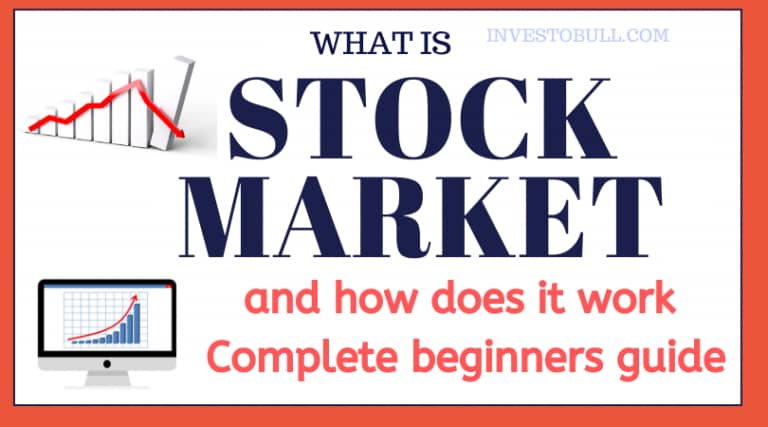Have you ever wondered why some people seem to grow their money effortlessly while others struggle to save even a little? The secret often lies in how they use the stock market. Investing in stocks isn’t just for the wealthy or financial experts. In fact, with the right approach, anyone can build real wealth over time. According to data from the S&P Dow Jones Indices, the average annual return of the S&P 500 has been about 10% since its inception. That means your money can grow faster than it would in a regular savings account.
But here’s the catch: growing wealth through stocks isn’t about luck or guessing which stock will soar next. It’s about smart choices, patience, and understanding some basic principles. So, how can you make the stock market work for you without getting overwhelmed or losing money? Let’s dive into seven practical ways to grow your wealth with stock market investing, backed by research, expert advice, and real-world examples. Ready to take control of your financial future?

—
1. Open the Right Investment Account to Get Started
Before you buy a single share, you need a place to invest. Think of this as opening a bank account, but for your investments. There are different types of accounts: individual brokerage accounts, retirement accounts like IRAs, and employer-sponsored plans such as 401(k)s. Each has its own benefits and rules.
Why Account Choice Matters
Choosing the right investment account can significantly impact your long-term returns. For example, a Roth IRA allows your investments to grow tax-free, which means you won’t pay taxes on your earnings when you withdraw in retirement. On the other hand, a traditional IRA or 401(k) lets you contribute pre-tax money, reducing your taxable income now, but you’ll pay taxes when you withdraw.
According to a study by the National Bureau of Economic Research, tax-advantaged accounts can increase your effective returns by several percentage points annually, which adds up to a lot over decades.
Employer-Sponsored Plans: Don’t Miss Out on Free Money
If your employer offers a 401(k) plan with a matching contribution, it’s like getting a guaranteed return on your investment. For example, if your employer matches 50% of your contributions up to 6% of your salary, that’s an immediate 50% return on that portion of your investment. Not taking advantage of this is like leaving free money on the table.
How to Choose a Brokerage Account
If you’re investing outside of retirement accounts, you’ll need a brokerage account. Look for:
- Low or zero commissions: Many brokers now offer free trades.
- User-friendly platform: Easy to navigate and understand.
- Educational resources: Helpful articles, videos, and tools.
- Good customer service: In case you need help.
Some popular brokers include Fidelity, Charles Schwab, and Vanguard. They offer a mix of low fees and strong educational support.
Starting Small Is Okay
You don’t need thousands of dollars to begin investing. Many brokers allow you to buy fractional shares, meaning you can invest small amounts like $50 or $100 and still own pieces of expensive stocks like Amazon or Google.
—
2. Invest in Index Funds and ETFs for Easy Diversification
Picking individual stocks can be exciting but risky. Instead, consider index funds or ETFs (exchange-traded funds). These funds pool money from many investors to buy a broad range of stocks, often tracking an index like the S&P 500. This spreads your risk because you’re not relying on one company’s success.
Why Diversification Matters
Imagine you put all your money into one company’s stock. If that company faces trouble, your entire investment could drop dramatically. But if you spread your money across hundreds of companies, the poor performance of one won’t hurt you as much.
The Research Behind Index Funds
A famous study by the University of Chicago showed that over 90% of actively managed funds fail to beat their benchmark indexes over a 15-year period. This means most fund managers can’t consistently pick winning stocks or time the market better than a simple index fund.
Warren Buffett’s Advice
Warren Buffett, one of the richest and most successful investors ever, has said that most people would be better off investing in low-cost index funds than trying to pick individual stocks. He even instructed the trustee of his estate to invest 90% of the money in an S&P 500 index fund.
How to Choose the Right Index Fund or ETF
- Look at fees: Expense ratios below 0.1% are excellent.
- Check the index tracked: The S&P 500 is popular, but you can also find funds tracking the total stock market, international markets, or specific sectors.
- Consider your goals: For broad exposure, total market funds work well. For targeted growth, sector ETFs might be suitable.
—
3. Stick to the Buy and Hold Strategy for Long-Term Growth
The stock market can be a rollercoaster. Prices go up and down daily, sometimes wildly. But history shows that over the long run, the market tends to rise. The S&P 500, for example, has returned about 10% annually on average since 1957, including dividends.
The Danger of Trying to Time the Market
Many investors try to buy low and sell high, but this is easier said than done. Studies show that missing just a few of the best market days can drastically reduce your overall returns. According to research by Charles Schwab, missing the 10 best days in the market over 20 years could cut your returns in half.
Emotional Investing Is Costly
Dalbar, a financial research firm, found that the average investor’s returns lag behind the market because they often buy high during market booms and sell low during crashes. This behavior is the opposite of what’s needed to grow wealth.
The Power of Patience
John Bogle, the founder of Vanguard, famously said, “The investor’s chief problem—and even his worst enemy—is likely to be himself.” Staying calm and sticking to your plan through market ups and downs lets your investments grow steadily.
Real-Life Example: The 2008 Financial Crisis
During the 2008 crash, many panicked and sold their stocks at a loss. Those who stayed invested saw the market recover and even reach new highs in the following years. If you had sold in 2008, you would have missed the strong rebound that followed.
—
4. Reinvest Dividends for Compounding Growth
Dividends are payments companies make to shareholders from their profits. Not all companies pay dividends, but many well-established ones do. Reinvesting these dividends to buy more shares can significantly boost your returns over time thanks to compounding — where your earnings generate even more earnings.
What Is Compounding?
Compounding means you earn returns on your original investment plus the returns that investment has already earned. Over time, this effect can turn small amounts into large sums.
The Magic of Dividend Reinvestment
For example, if you own 100 shares of a company paying a $1 dividend, you get $100. If you use that $100 to buy more shares, next time you get dividends on more shares. This cycle repeats and accelerates your portfolio growth.
Automatic Dividend Reinvestment Plans (DRIPs)
Many brokerages offer DRIPs that automatically reinvest dividends for you, so you don’t have to think about it. This makes it easy to harness the power of compounding without extra effort.
Historical Impact of Dividends
According to a study by Hartford Funds, dividends have accounted for more than 40% of the total return of the S&P 500 since 1930. This shows how important dividends are to long-term wealth building.
—
5. Diversify Your Portfolio to Manage Risk
Diversification means spreading your investments across different sectors, industries, and asset types to reduce risk. If one stock or sector performs poorly, others may perform well, balancing your overall returns.
Why Diversification Works
No one can predict which sector or stock will perform best each year. By diversifying, you reduce the risk of losing a large portion of your money if one area tanks.
Ways to Diversify
- Across Sectors: Technology, healthcare, consumer goods, energy, finance, and more.
- Across Asset Classes: Stocks, bonds, real estate investment trusts (REITs), and commodities.
- Geographically: Domestic and international markets.
Example: The Dot-Com Bubble
In the early 2000s, technology stocks crashed hard. Investors who only owned tech stocks lost a lot. Those who had diversified portfolios with bonds, real estate, and other sectors fared better.
Adjust Diversification as You Age
Younger investors can afford to take more risk with a stock-heavy portfolio. As you approach retirement, shifting to bonds and safer assets can protect your savings.
—
6. Stay Informed on Market Trends and Innovations
Technology and innovation drive stock market growth. Trends like artificial intelligence (AI), 5G, blockchain, and the Internet of Things (IoT) are shaping the future economy and creating new investment opportunities. Keeping an eye on these trends can help you identify promising sectors and companies early.
Why Understanding Trends Matters
Investing in companies that lead innovation can boost your returns. For example, those who invested early in companies like Apple, Amazon, or Tesla have seen massive gains.
How to Stay Updated
- Read Financial News: Websites like Bloomberg, CNBC, and Reuters offer daily updates.
- Follow Expert Analysis: Listen to respected investors and analysts.
Use Educational Resources: Many brokers provide webinars, articles, and tutorials.
Avoid Chasing Hype
While it’s tempting to jump on the latest “hot” stock, many fads fade quickly. Do your homework and invest based on solid fundamentals.
—
7. Use Research and Expert Advice to Make Informed Decisions
Investing isn’t about luck; it’s about informed decisions. Use resources like FINRA’s Market Data Center, brokerage research reports, and independent analysis to evaluate stocks and funds. Avoid emotional decisions or trying to time the market, which even experts warn against.
How to Research Stocks
- Look at Financial Statements: Check earnings, revenue growth, and debt.
- Understand Valuation: Is the stock price reasonable compared to earnings?
- Check Industry Position: Is the company competitive and innovative?
Learn from the Experts
Benjamin Graham, the father of value investing, said, “The individual investor should act consistently as an investor and not as a speculator.” Focus on long-term value rather than short-term gains.
Use Tools and Resources
Many online platforms offer stock screeners, analyst ratings, and educational content to help you make smarter choices.
—
Frequently Asked Questions (FAQs)
Q1. How much money do I need to start investing in stocks?
A: You can start with as little as $100 or even less, especially with fractional shares and no-minimum accounts offered by many brokers.
Q2. Is stock market investing risky?
A: All investments carry risk, but diversification and a long-term approach help manage it. Historically, stocks have outperformed other assets over time.
Q3. How long should I keep my investments?
A: Long-term investing (5+ years) tends to yield the best returns. Warren Buffett suggests owning stocks for at least 10 years.
Q4. Should I try to time the market?
A: No. Timing the market is extremely difficult and often leads to losses. Consistent investing and holding is the safer strategy.
Q5. What are dividends and why are they important?
Dividends are company profits shared with shareholders. Reinvesting them accelerates growth through compounding.
—
Growing wealth through the stock market is a journey that combines patience, knowledge, and smart strategies. With the right approach, you can harness the market’s power to build lasting financial security. Always have in mind, it’s not about getting rich quick but about making steady, informed choices that pay off over time.
So, are you ready to take control of your financial future and start growing your wealth today?
—
References & Further Reading
– S&P Dow Jones Indices: [Historical Performance](https://www.spglobal.com/spdji/en/)
– National Bureau of Economic Research: [Tax-Advantaged Accounts Study](https://www.nber.org/)
– University of Chicago Booth School of Business: [Active vs. Passive Investing](https://www.chicagobooth.edu/)
– FINRA Market Data Center: [Investor Resources](https://www.finra.org/investors)










dwot45
oqb026